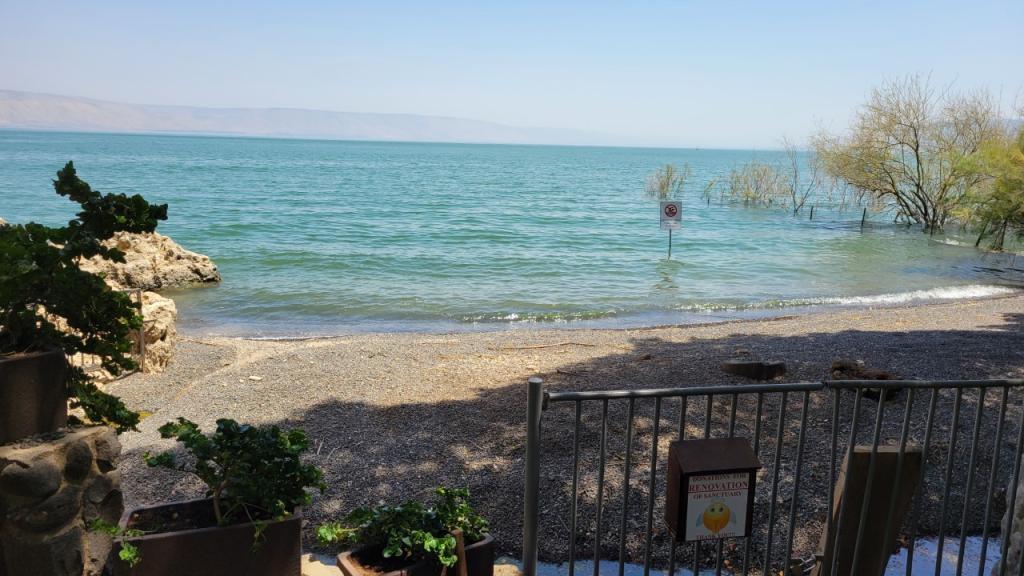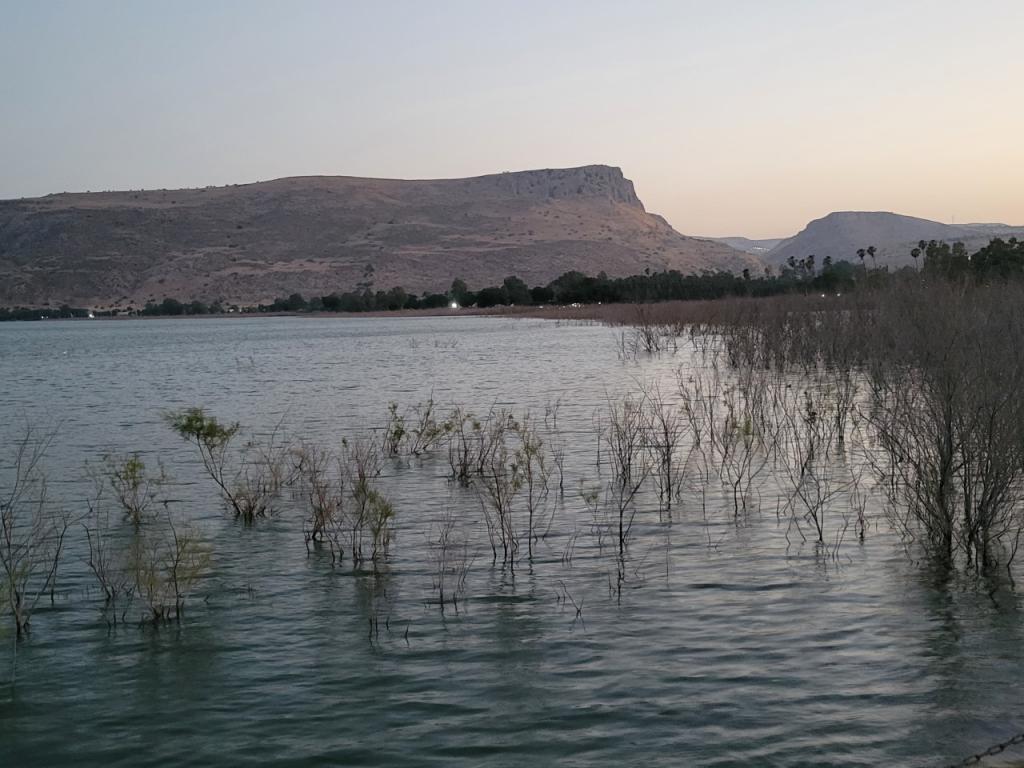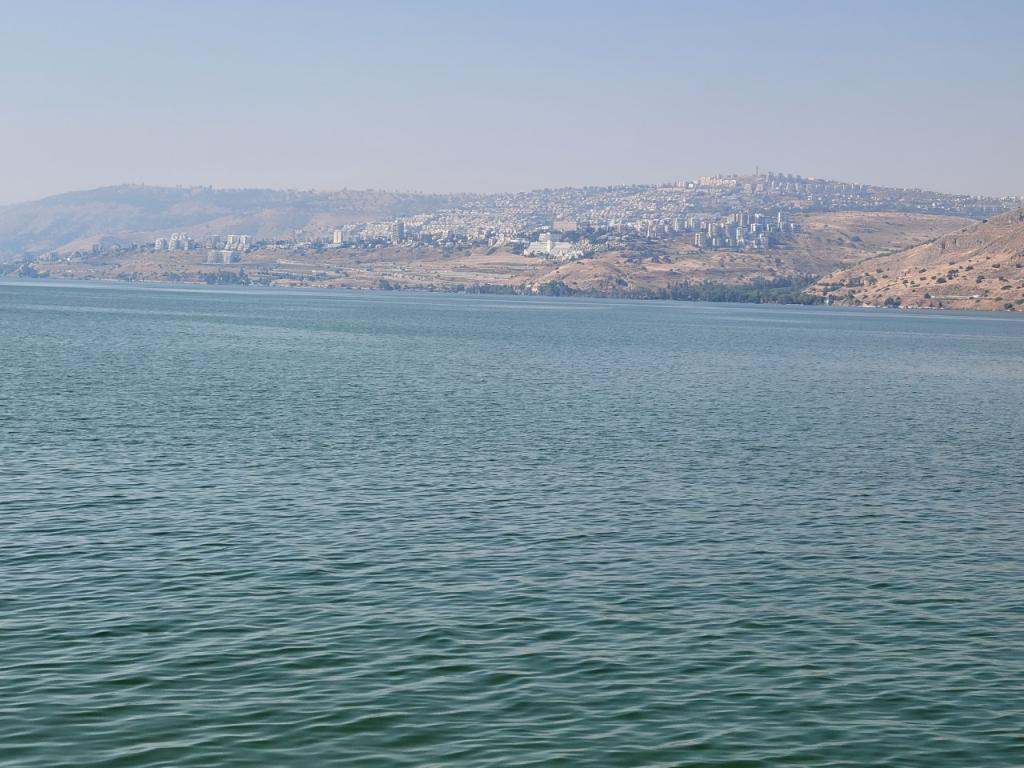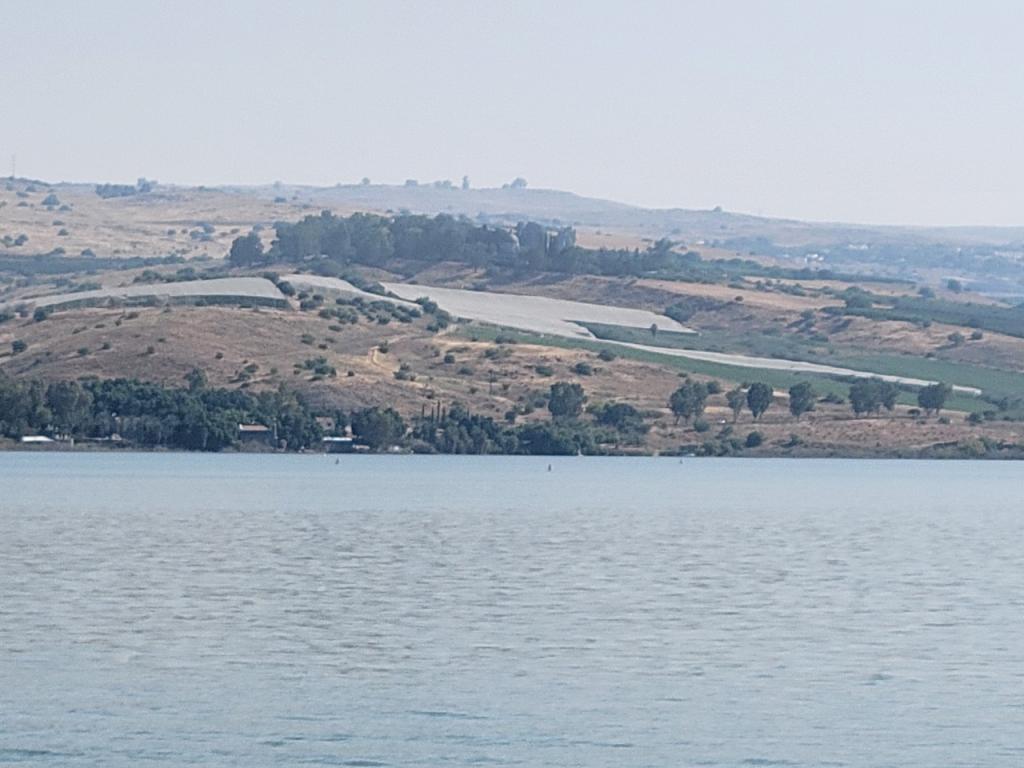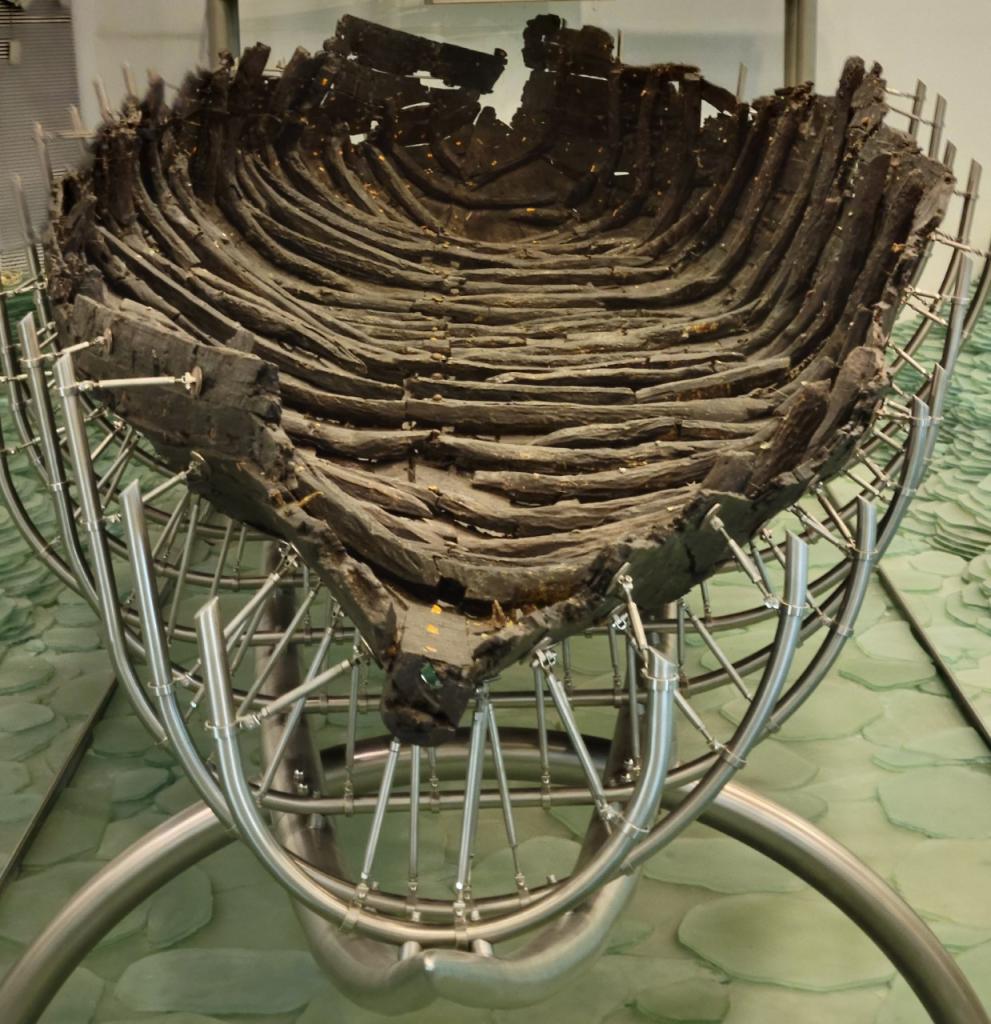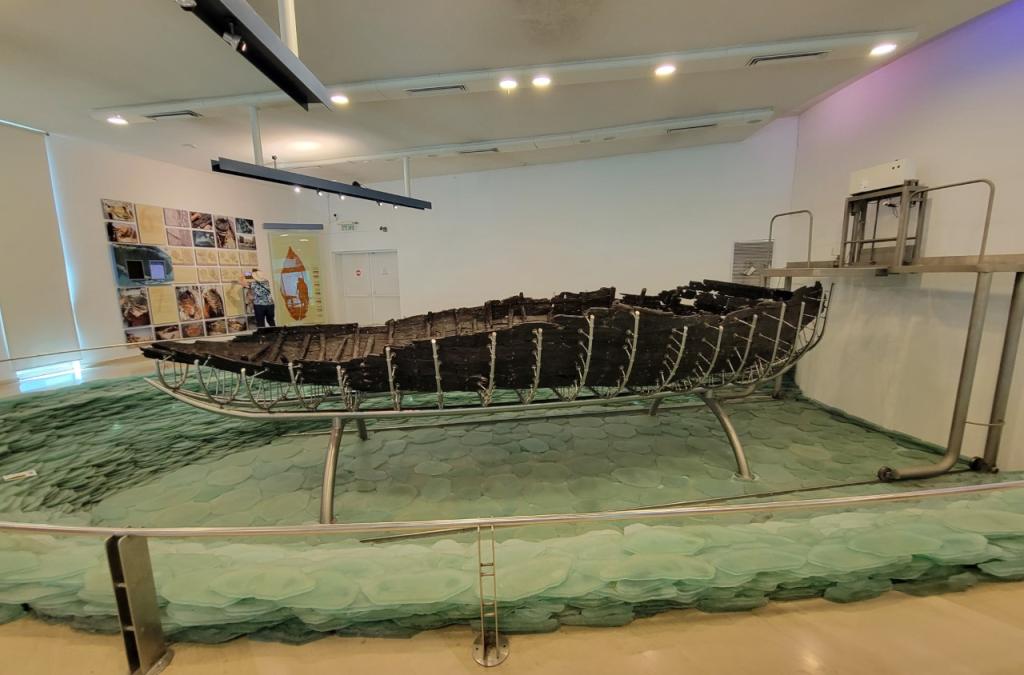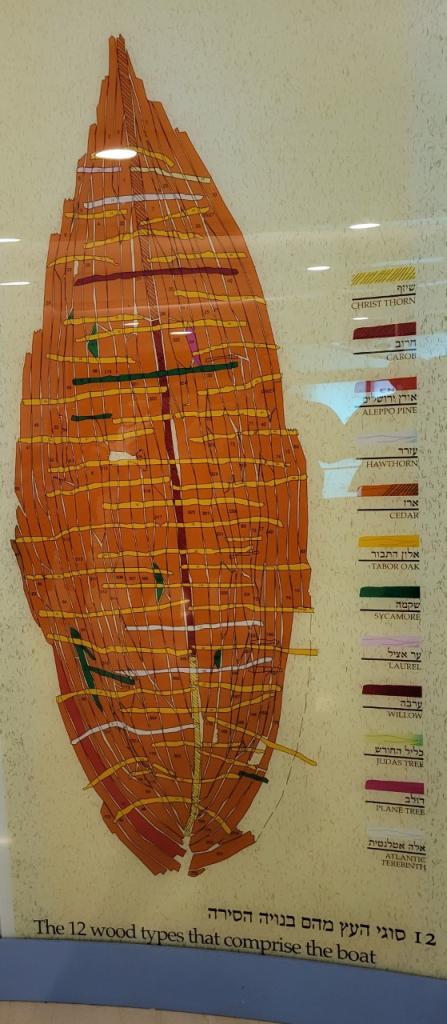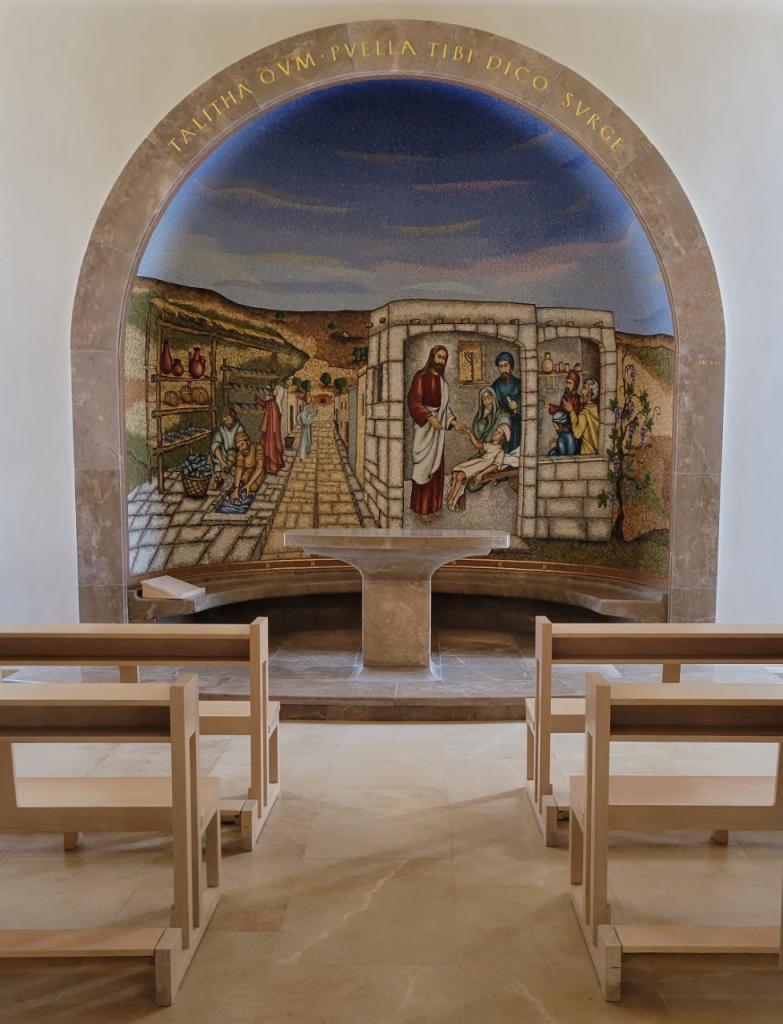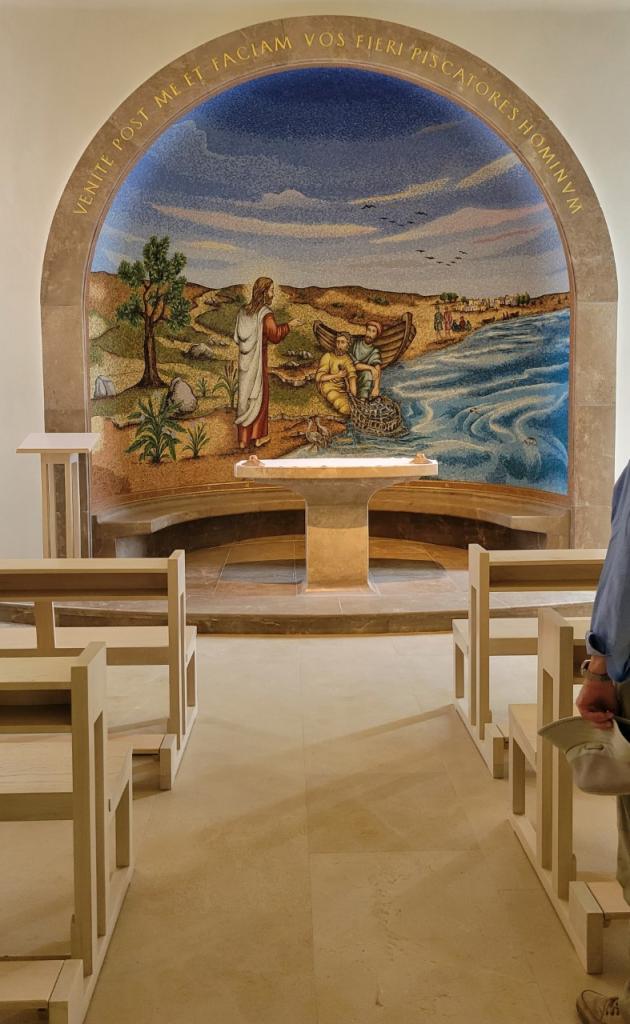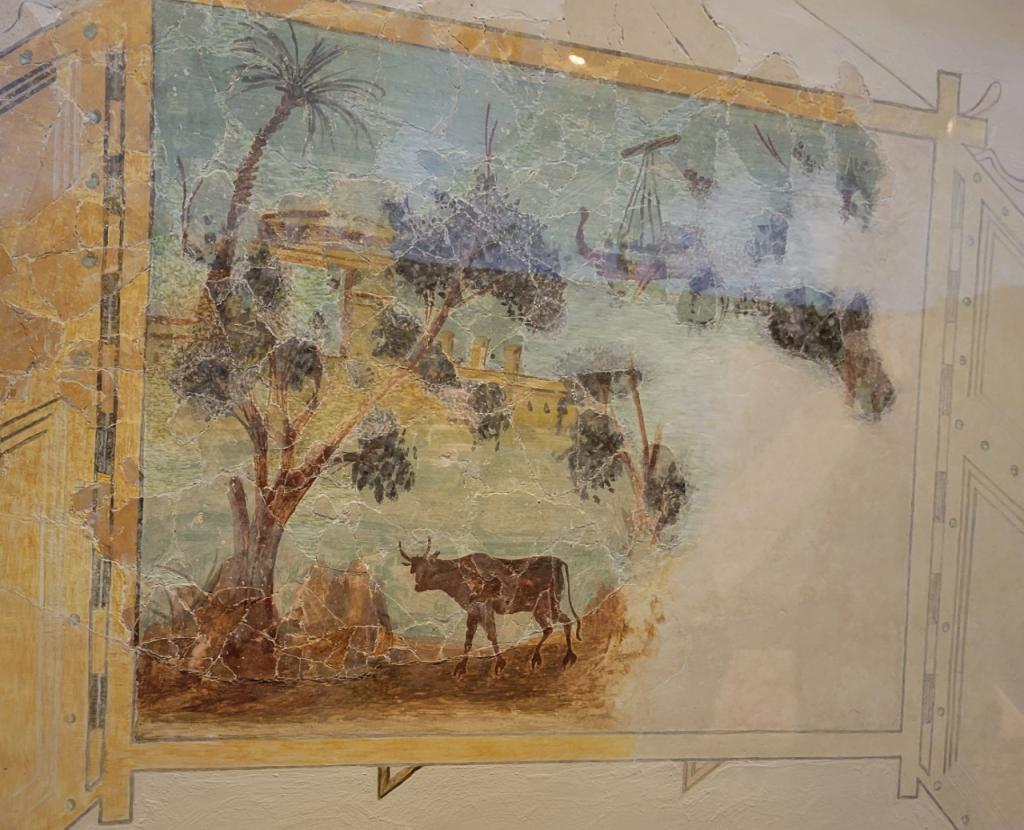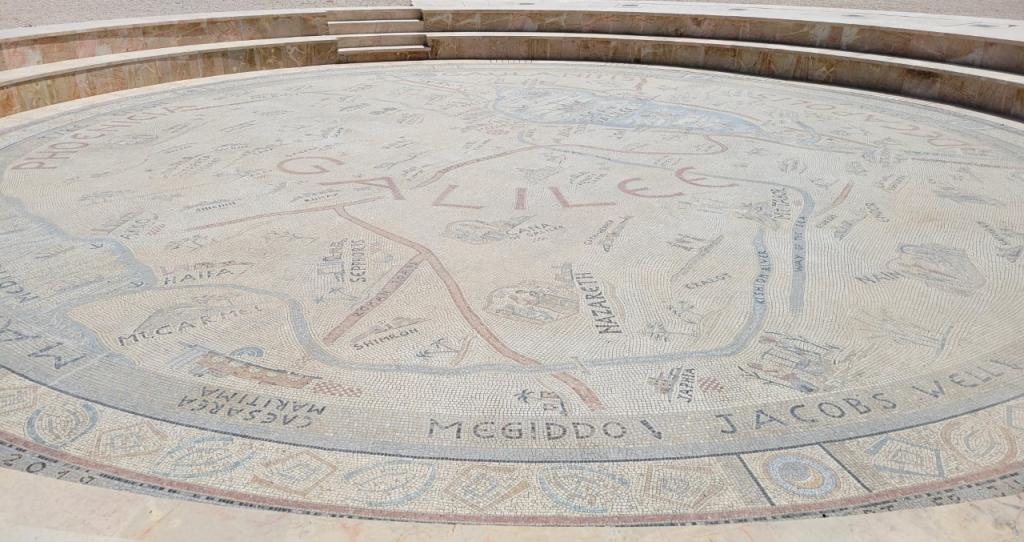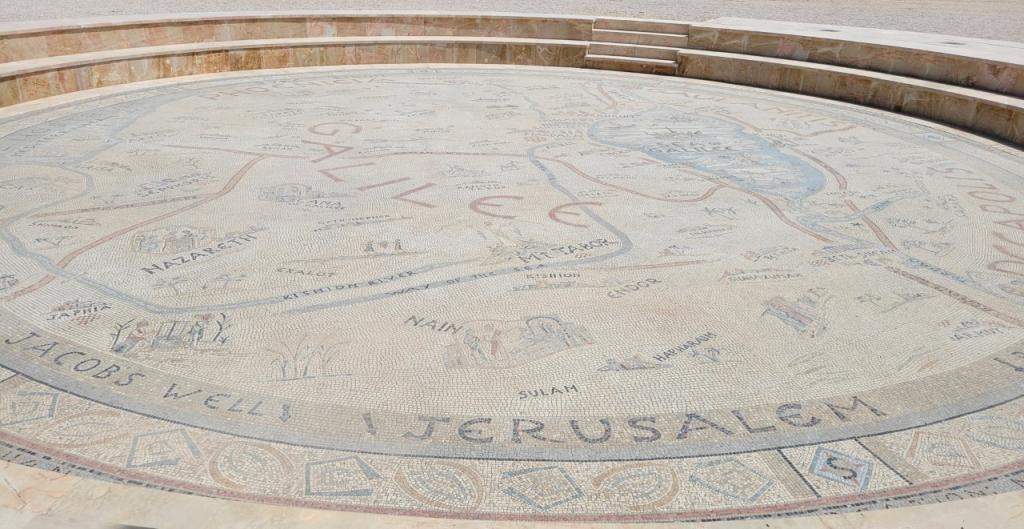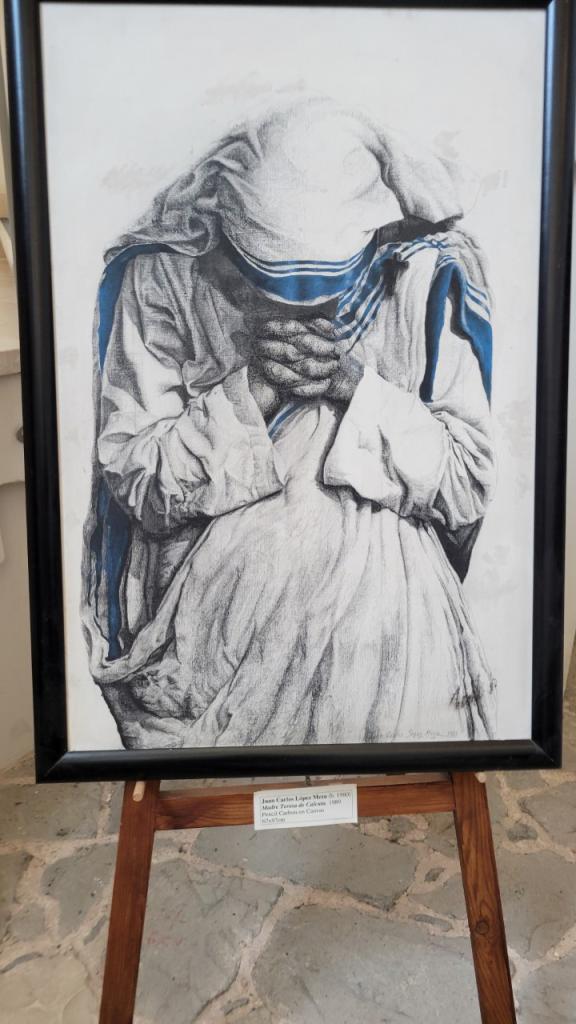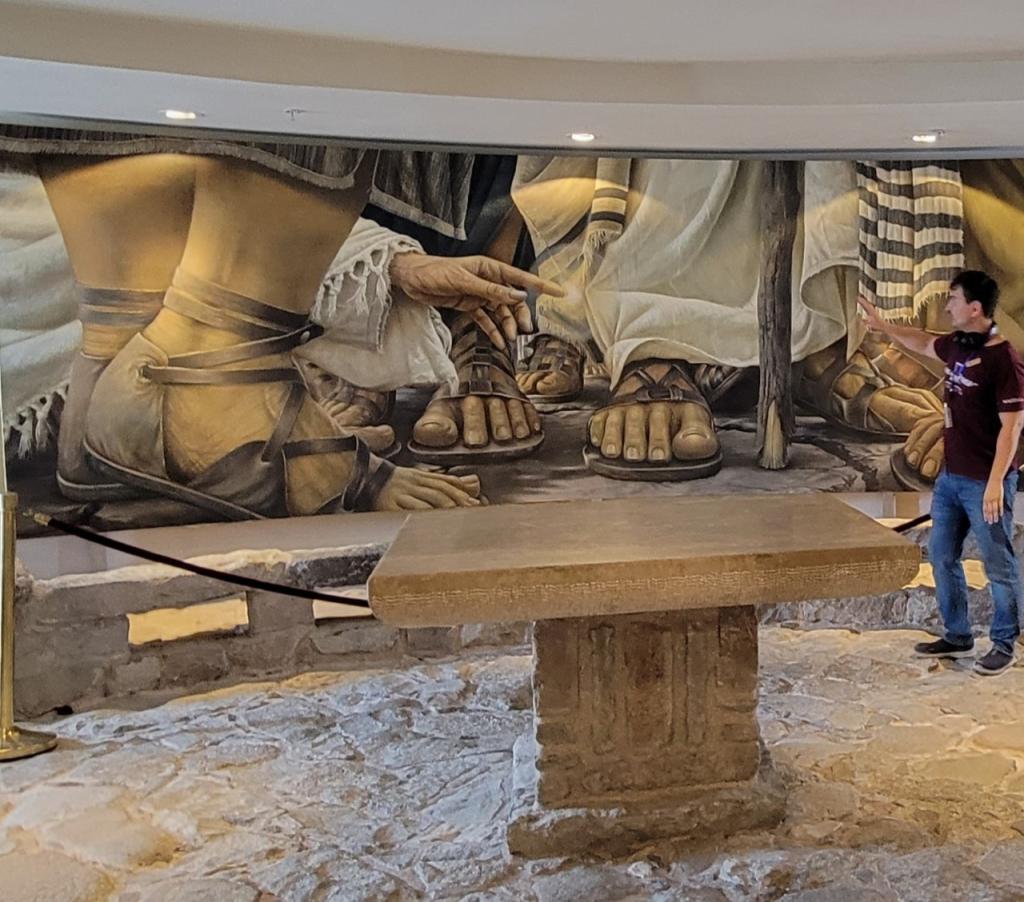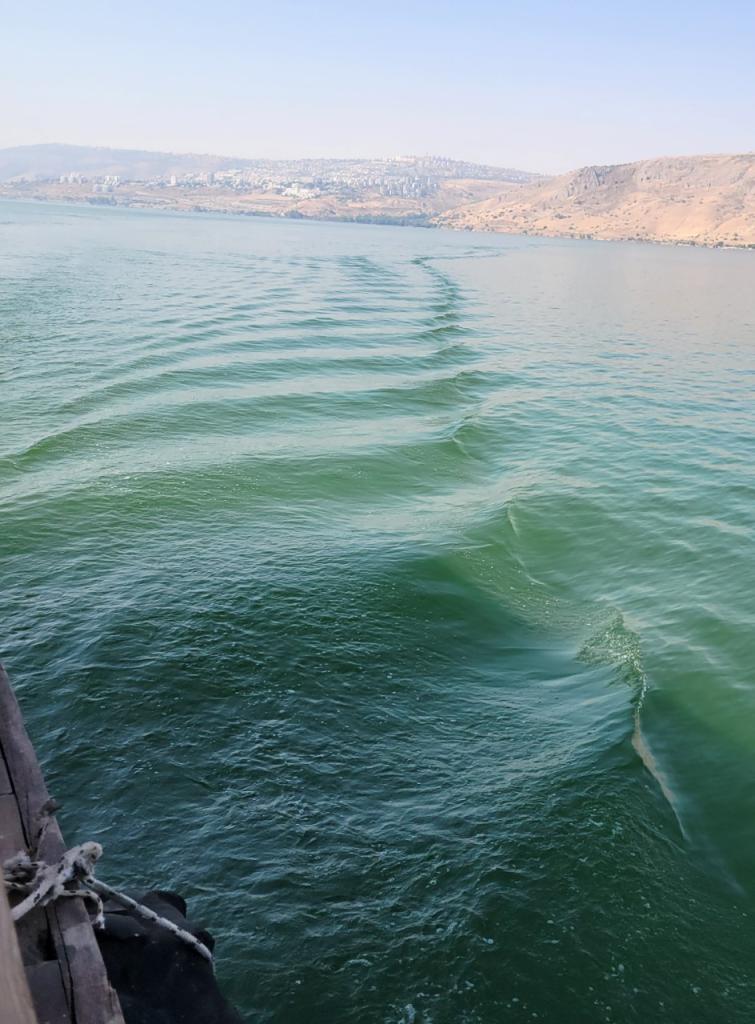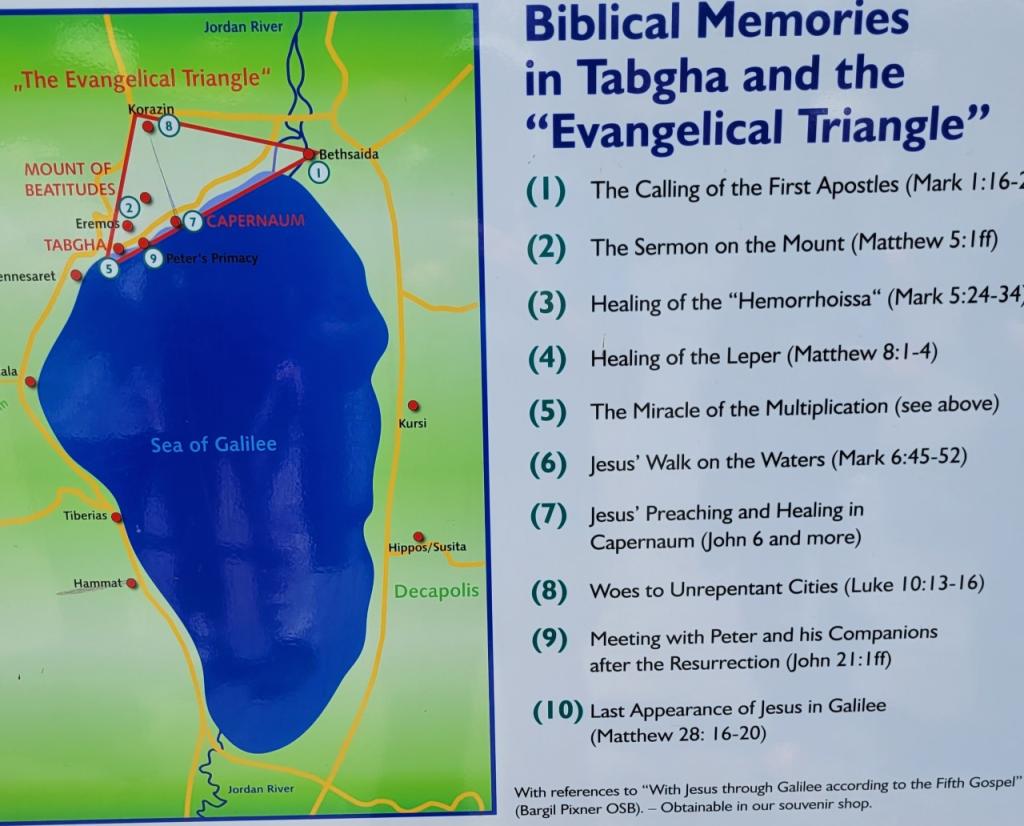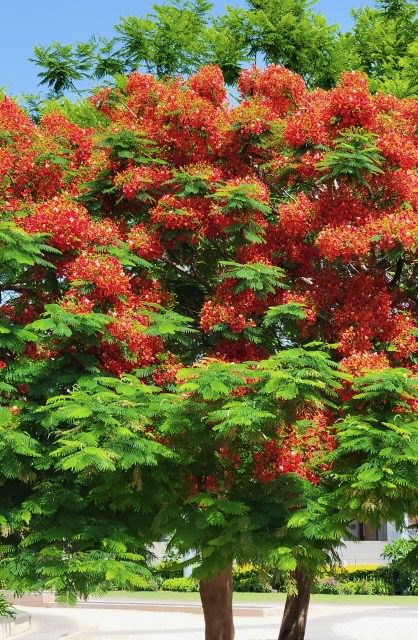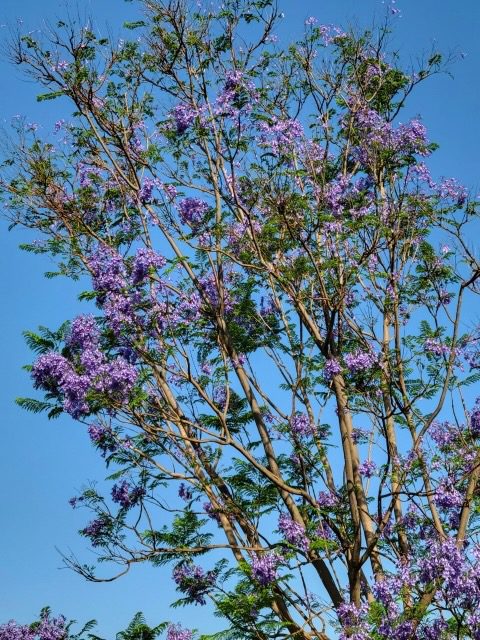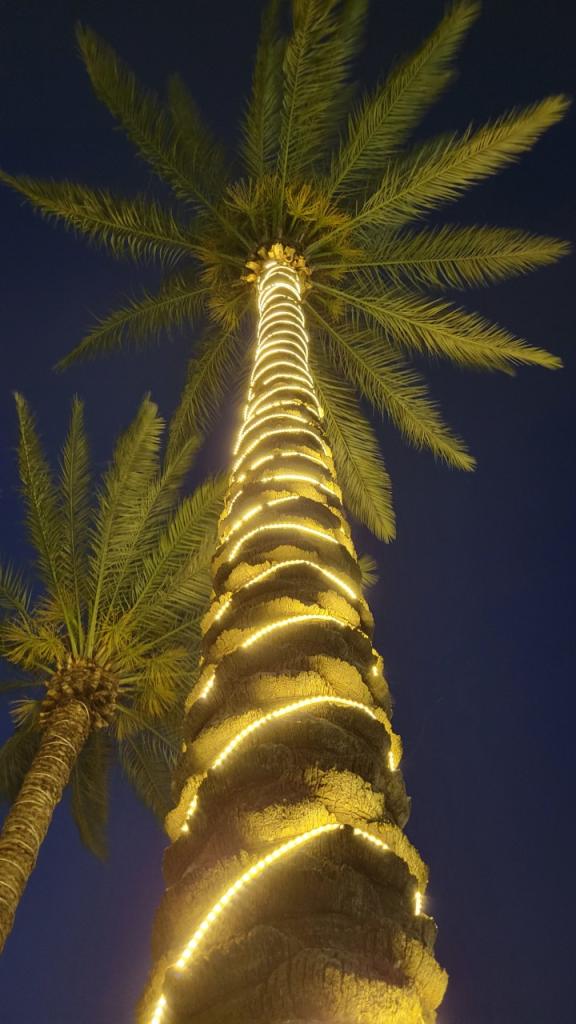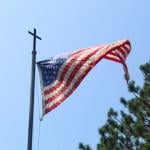Ah the sea of Galilee, or Tiberias, or Kinnert, but it’s not really a sea. It’s just a decent sized lake fed by the headwaters of the river Jordan. It is a mere 13 miles long, and 8 miles wide at its widest. And it is the major source of water for all the crops in the area during the dry months especially. This year however for the first time in a very long time, the lake was full.
Notice the trees under water in the shallows.
That’s the cliffs of Arbel in the distance.
That’s modern Tiberias in the distance.
That’s the banana groves under plastic protection near the Mt. of the Beatitudes.
And here’s the reassembled first century fishing boat found in the shallows when the lake was at an all time low in 1986, right after I made my first trip to Israel.
This boat was made of whatever scraps from trees that could be found, and it tells you something about how much more forested the area round the lake may have been in Jesus’ day.
And while we are on the boat theme, lets visit the most interesting of the new digs in the area at Magdala or Migdal. The Franciscans have been doing an amazing job at this site, and have built a gorgeous chapel overlooking the sea.
There are small and large chapels here…
Too me the most affecting pictures are in the downstairs chapel where we find these two items…
Mother Teresa at prayer, and below that a spectacular wall painting of the moment the woman with the flow of blood reached out and touched the hem of Jesus’ garment and was healed.
It’s a pleasant ride on a calm day on this lake, but at the north end of the lake, if there is a thunderstorm, you don’t want to be out there. The bowl shape of the northern end of the lake the winds can be swirling and really whip up the waves. See the stories in the Gospels to this effect.
Here’s a man trying to fish like the ancients with a circular net with weights around the edges.
This northwestern corner of the lake is where much of the early Gospel action took place.
What is most notable is how Tiberias itself is never a city in which we find Jesus. Why? Herod Antipas built a capital city there, on top of a Jewish graveyard and observant Jews wouldn’t even go near the place. Jesus’ orbit was Capernaum (i.e. Kefer Nahum, the village of Nahum the prophet), Magdala, Bethsaida, and the surrounding hills. Since I’ve done quite a few posts on this area before, I’ll focus on some specific things. First, the so-called Jesus boat which is at the kibbutz where we stayed this trip, Nof Ginosaur. Where everything grows and is beautiful.
We will continue our exploration of this crucial region in our next post.


